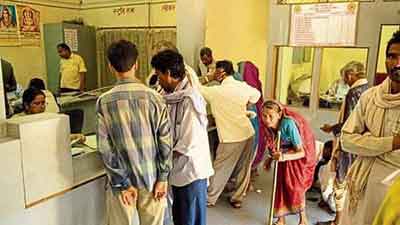Date: 09/02/2023
Relevance: GS-3: Effects of liberalization on the economy, changes in industrial policy and their effects on industrial growth.
Key Phrases: Credit-Deposit (CD) Ratio, Borrowers, Public Sector Banks, Lenders, Rural Development, Infrastructure, Growth, Credit Culture.
Context:
- Public sector banks (PSBs) are aiming to enhance funding to India's rural borrowers and small company owners, in response to the Union finance ministry's request that lenders increase their credit-deposit ratio.
Key Highlights:
- Increased financing to these segments will help expedite the revival of the rural economy, which is struggling to reach pre-covid levels, with micro, small and medium enterprises, a major employment generator for rural India, still struggling to return to normalcy.
- Initiatives planned by banks include collaborating with non-bank lenders, including housing finance companies, to provide a major credit push for small businesses through MSME clusters, as well as direct disbursements to enterprises that are part of the sector.
What Is Credit-Deposit Ratio For Banks?
- The CD ratio refers to the credit-deposit ratio in banking parlance. It indicates how much of the money banks have raised in the form of deposits has been deployed as loans.
- The ratio is the first indicator of a bank's health. In addition
to indicating resource pressure, a very high ratio may also suggest capital
adequacy issues, requiring banks to raise more capital.
- In addition, the balance sheet would be unhealthy if assets and liabilities were mismatched.
- So if the CD ratio for a single bank or the whole banking system stands at 75%, it means that three-fourths of the deposits with that bank or with the system have been given out as loans.
- A low CD ratio suggests relatively poor credit growth compared with deposit growth. A high CD ratio would mean strong demand for credit in an environment of relatively slower deposit growth.
- Late in 2016, when demonetisation kept bankers busy exchanging banknotes and few new loans were extended, the CD ratio dropped to a historic low of less than 70%.
Current Scenario:
- India’s CD ratio, based on where loans were sanctioned, stood at 72.1 in FY22, showed RBI data, with the western region having the highest ratio at 85.9, followed by the South at 84.1, and North India at 74.5.
- The central region (50.5), north-eastern region (44.8) and eastern region (42.4) have fallen below the national average.
- While credit-deposit ratios are generally low in the East, it is
true for specific pockets in other parts of the country as well.
- For instance, as per RBI data, Goa has a low CD ratio despite being a prosperous state.
- In places where CD ratios are low, this is due to a lacklustre demand for credit. In addition, the origin of the finance used to construct infrastructure in some of these regions is not the region in question, but rather the headquarters of the borrower or lender.
What is the Plan?
- According to the plan, state-owned banks have a target to increase credit in areas where the credit-deposit (CD) ratio is below 60%.
- Banks have identified areas with the intent to boost consumption. A concerted push by public sector banks to identify areas is expected to give a fillip to consumption, especially on the retail side.
- PSU banks are also deepening their focus on individual loans and this push would carry that idea forward.
- In view of the muted rural demand in India post-covid, the government has announced measures in the budget to support small businesses.
- The Centre will allocate more funds to offer credit to MSMEs and bring in changes to the rules to ensure such enterprises receive their payments from clients on time.
Conclusion:
- Reserve Bank of India (RBI) in its report said that within population groups, the relatively higher credit growth to rural and semi-urban areas after the outbreak of Covid-19 was a bright spot.
- While PSBs (public sector banks) remained the major contributor of rural lending, given their reach and accessibility, the share of PVBs (private banks) has also climbed up.
- While the government is attempting to promote credit in India's eastern states, a shortage of lending possibilities and an unhealthy credit culture must be addressed before progress can be accomplished.
Source: Live-Mint
Mains Question:
Q. What Is Credit-Deposit Ratio and why it is considered as a key parameter in banking? Comment (50 words).







